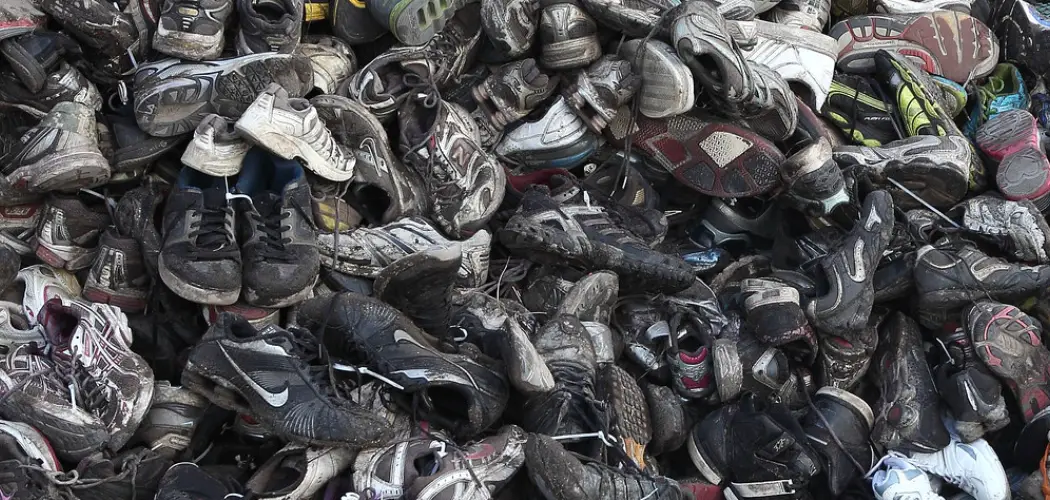Recycling shoes is a sustainable practice that not only diverts waste from landfills but also reduces the environmental impact of shoe production. With millions of shoes discarded each year, finding ways to recycle them responsibly is essential for minimizing their carbon footprint.
From sneakers to heels, virtually all types of shoes can be recycled, offering an opportunity to repurpose materials and conserve resources. However, recycling shoes requires proper preparation and knowledge of the recycling process.
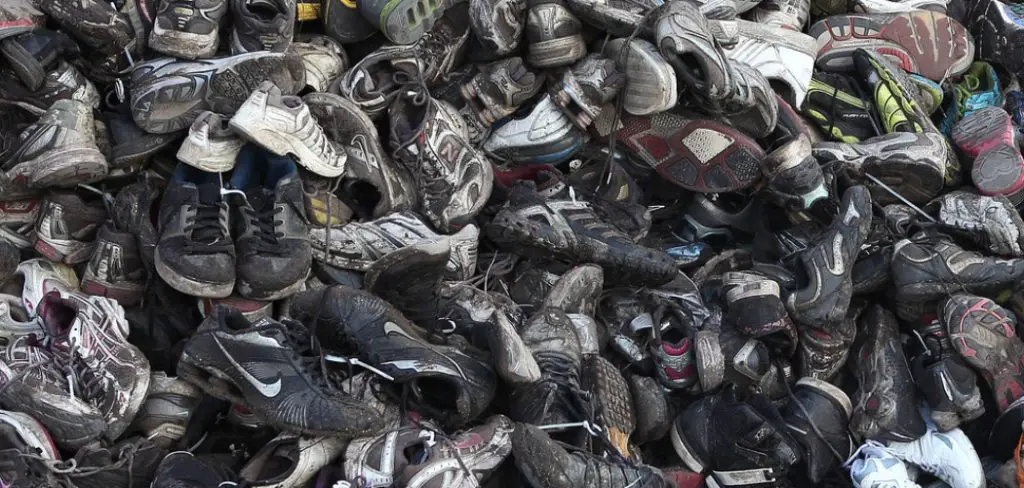
In this article, we’ll explore various methods and resources for recycling shoes, from donation programs and shoe recycling centers to DIY upcycling projects. By learning how to recycle shoes effectively, individuals can contribute to a greener and more sustainable future while extending the life cycle of their footwear.
The Importance of Recycling Shoes
Recycling shoes plays a pivotal role in environmental conservation and waste reduction. In an era where consumerism often leads to excessive waste, repurposing old or unwanted shoes becomes a critical act of environmental stewardship.
By recycling footwear, we reduce the volume of waste ending up in landfills, which can take centuries to decompose, releasing harmful chemicals into the soil and waterways. Additionally, the process of manufacturing new shoes involves substantial usage of natural resources, including water, raw materials, and energy.
Recycling helps to lessen the demand for raw materials, thereby conserving resources and reducing the overall environmental impact. Beyond the ecological benefits, recycling shoes can also support community initiatives by providing footwear to those in need or by supplying materials for new products, creating a cycle of sustainability that benefits both the planet and its inhabitants.
The Benefits of Shoe Recycling
The act of recycling shoes extends beyond environmental preservation, offering a multitude of benefits that ripple through communities and industries. One of the primary advantages is the conservation of resources.
Many shoes are manufactured using valuable materials like rubber, leather, and synthetic fibers, which require considerable energy and resources to produce. By recycling, these materials can be reclaimed and reused, reducing the need for virgin resources and the environmental strain of their extraction and processing.
Furthermore, shoe recycling supports charitable efforts and aids underprivileged communities. Many recycling programs collaborate with non-profit organizations to distribute wearable shoes to those in need, ensuring that footwear serves a purpose long after its original owner has moved on. This not only addresses the issue of waste but also fulfills social responsibilities by helping those less fortunate.
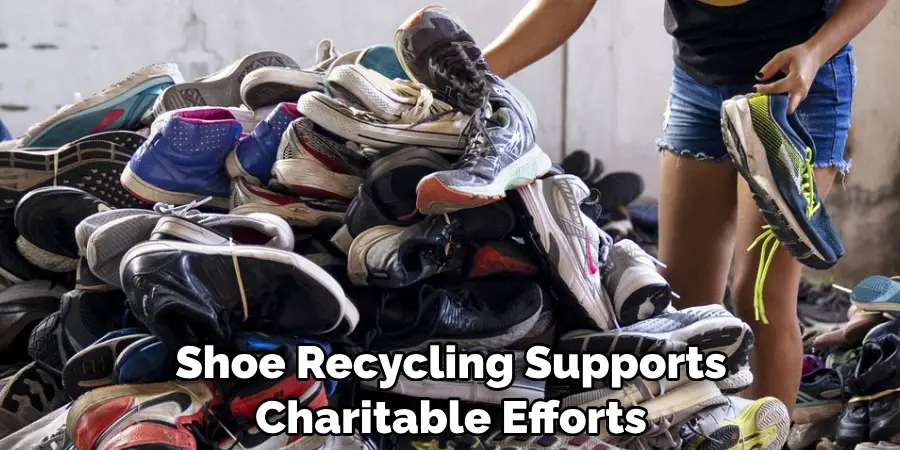
Innovation and economic benefits also stem from the recycling of shoes. Companies specializing in recycled materials often use reclaimed components from shoes to create a variety of products, ranging from playground surfaces to new footwear. This not only fosters innovation in product development but also creates jobs and promotes economic activities related to sustainable goods and recycling technologies.
Additionally, engaging in shoe recycling cultivates environmental awareness and responsibility. It encourages individuals to consider the lifecycle of their possessions and to seek out sustainable alternatives to disposal. This shift in mindset is crucial for the ongoing efforts to reduce waste, conserve natural resources, and mitigate the impacts of climate change. Through the simple act of recycling shoes, individuals can contribute to a larger movement towards sustainability and environmental stewardship.
Understanding the Benefits of Shoe Recycling
Shoe recycling presents an opportunity not just to reduce waste but also to participate in a circular economy—a system aimed at eliminating waste and the continual use of resources. The benefits of shoe recycling are multifaceted, touching on environmental, social, and economic aspects.
Environmentally, the practice contributes significantly to reducing the carbon footprint associated with the production and disposal of footwear. By reusing and repurposing materials, we decrease the demand for new raw materials, which in turn reduces the pollution and energy consumption related to manufacturing processes.
Socially, shoe recycling has the potential to make a profound impact. Donated shoes that are still in good condition can be redistributed to individuals in need, providing them with essential footwear. This can be particularly impactful in underprivileged communities or developing countries, where access to adequate footwear can play a crucial role in day-to-day life, affecting everything from personal mobility to opportunities for education and employment.
Economically, recycling shoes stimulates the development of green industries. It opens up new markets for recycled materials and products, fostering innovation in the reuse of rubber, textiles, and other materials found in shoes. Companies and start-ups that specialize in recycled products can create jobs and contribute to a growing sector of the economy focused on sustainability.
In conclusion, the act of recycling shoes extends far beyond the simple reduction of waste—it contributes to a more sustainable and equitable world. By understanding and participating in shoe recycling, individuals can take an active role in conservation efforts, support community well-being, and contribute to the growth of sustainable industry practices.
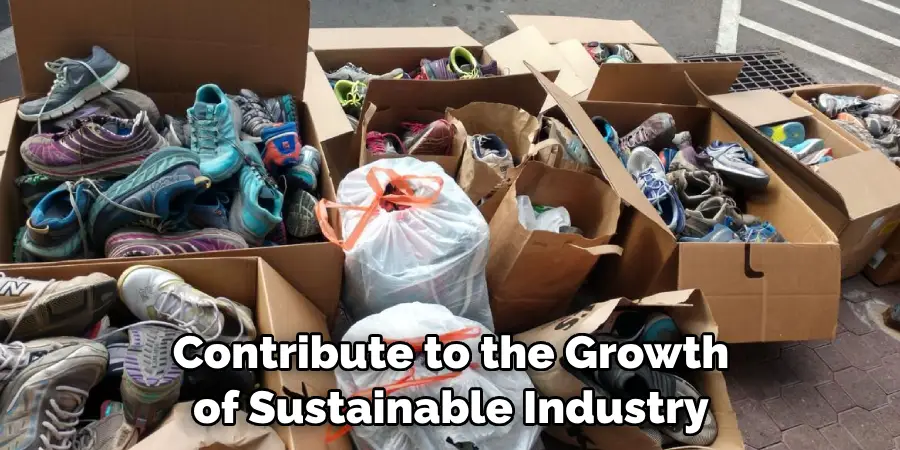
Reducing Landfill Waste
Reducing landfill waste stands as a crucial challenge in our ongoing efforts toward sustainability and environmental preservation. The practice of shoe recycling plays a significant role in this endeavor by diverting millions of pairs of shoes away from landfills each year.
Landfills are not merely unsightly; they are also a source of pollution, emitting harmful gases like methane, a potent greenhouse gas, and leachate, a toxic liquid that can contaminate soil and groundwater. By choosing to recycle rather than discard our shoes, we contribute to lessening landfill mass, thereby mitigating these environmental hazards.
Furthermore, the initiative to reduce landfill waste through shoe recycling aligns with broader waste reduction strategies such as reusing and repurposing items wherever possible. This approach not only diminishes the volume of waste that needs to be managed but also fosters a culture of resourcefulness and environmental responsibility.
Encouraging consumers to participate in shoe recycling programs or to donate their gently used shoes can have a profound impact on reducing overall waste. As society becomes more aware of the importance of waste reduction in landfills, shoe recycling stands out as an exemplary practice of how individual actions can lead to significant environmental benefits.
Different Types of Shoes and Their Components
Shoes come in a myriad of types, each designed for specific needs, aesthetics, and functions. Understanding the different types of shoes and their components is essential in appreciating the complexity of shoe recycling. Here are some common categories:
- Athletic Shoes: Designed for sports and physical activities, athletic shoes are often made with a combination of synthetic materials for the upper part, rubber soles for grip, and a cushioned midsole for comfort. They may also incorporate technologies for stability and support.
- Casual Shoes: This category includes a wide range of styles, such as sneakers, loafers, and flats, primarily designed for everyday wear. Materials can vary widely but often include leather, canvas, and synthetic fabrics.
- Formal Shoes: These shoes, like oxfords and pumps, are typically made with high-quality leather uppers, leather soles, and a sturdy heel. They are designed for professional and formal occasions.
- Outdoor Shoes and Boots: Made for hiking, trekking, and work in rough terrains, these shoes are characterized by their rugged design with features like waterproof materials, heavy-duty soles, and supportive ankles.
- Sandals and Flip-Flops: Light and open, these shoes are usually made from rubber, leather, or synthetic materials, offering minimal coverage and maximum airflow.
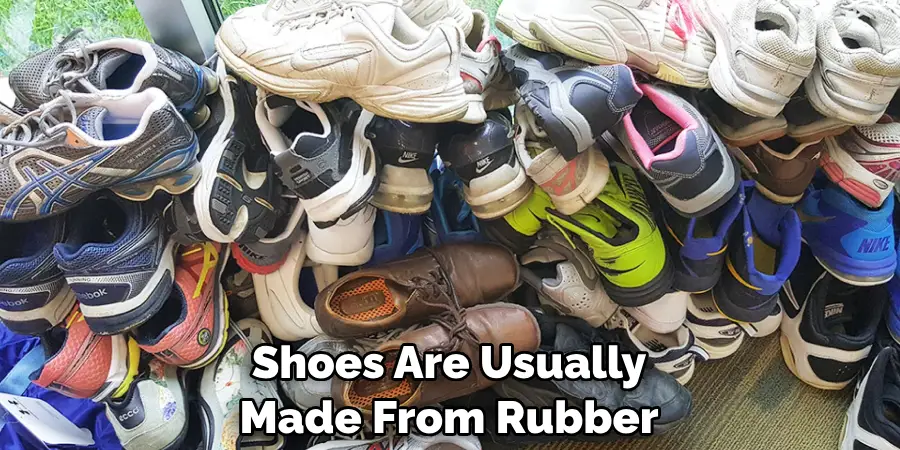
Each type of shoe is composed of multiple components, including:
- Uppers: The upper part of the shoe that covers the top of the foot. It can be made from leather, synthetic material, or fabric.
- Sole: The bottom part of the shoe, usually made from rubber or synthetic material, designed to provide traction.
- Insole: A layer inside the shoe for comfort and support. It may be made of various materials, including foam and leather.
- Heel: Found in many shoes, especially formal and athletic types, the heel is often made of rubber or dense foam.
- Laces or Fastenings: These components are used to secure the shoe on the foot and can be made from fabric, leather, or plastic.
Challenges in Recycling Different Shoe Materials
Recycling shoes encompasses a series of challenges, notably due to the diverse materials and complex construction of modern footwear. The primary difficulty lies in the disassembly of shoes, as they are typically manufactured using a variety of adhesives and stitching techniques to combine different components.
This makes the separation of materials like rubber, leather, synthetic fabrics, and plastics a labor-intensive and technically challenging process. Additionally, the quality and condition of the materials recovered can vary significantly, affecting their suitability for reuse in new products.
Another significant challenge is the recycling of synthetic materials, which are prevalent in athletic and casual shoes. These polymers can be difficult to break down and repurpose due to their durability and resistance to degradation. Furthermore, the process of recycling synthetic materials often requires specialized machinery and can be energy-intensive, diminishing the environmental benefits.
Leather, another common material in shoes, poses its unique recycling challenges. The tanning and finishing chemicals used in leather production can complicate recycling processes, making it hard to repurpose leather without additional, sometimes expensive, treatment steps.
Environmental considerations further complicate the recycling process. The need to minimize energy consumption and prevent the release of harmful substances during recycling requires careful planning and adherence to environmental standards, often necessitating sophisticated and costly solutions.
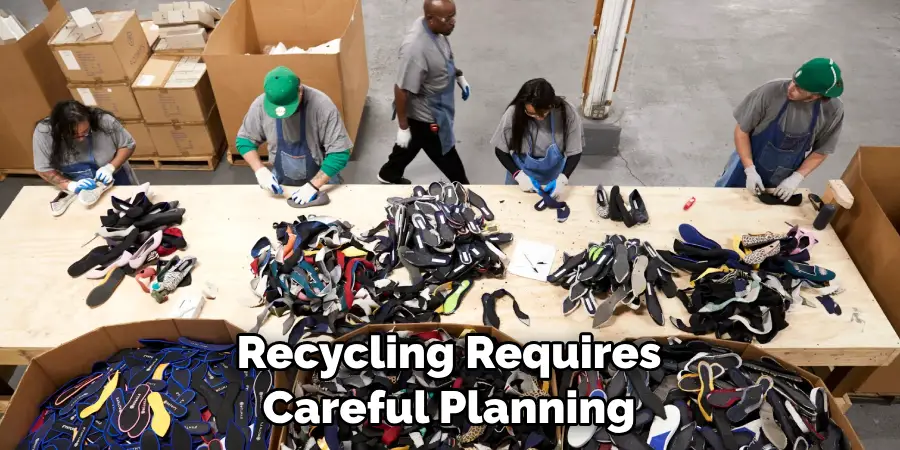
Preparation for Shoe Recycling
Before the actual recycling of shoes can take place, a crucial step is the preparation process, which ensures that the materials are ready for the recycling stages. This preparation process can significantly influence the efficiency and effectiveness of recycling efforts. Here’s an overview of the key steps involved:
- Sorting: The first step in preparing shoes for recycling is sorting them by material type and condition. This stage may involve separating leather shoes from those made with synthetic materials or distinguishing between shoes that are mildly worn and those that are significantly damaged.
- Cleaning: Once sorted, shoes often need to be cleaned to remove dirt, dust, and other contaminants. This step is essential for ensuring the quality of the recycled materials and for the smooth operation of recycling machinery.
- Disassembly: Perhaps the most labor-intensive part of the preparation process is the disassembly of shoes into their constituent parts. This task requires removing laces, insoles, and any metal components such as eyelets or buckles, followed by the separation of uppers from soles, which can be particularly challenging due to the strong adhesives used in shoe manufacturing.
- Material Shredding: After disassembly, some materials may need to be shredded into smaller pieces to facilitate further processing. For example, rubber soles can be ground down into crumb rubber, which can then be repurposed for various applications, including playground surfaces, athletic tracks, and new shoe soles.
- Quality Assessment: Throughout the preparation process, it’s vital to continually assess the quality of the materials. Not all parts of the shoe may be suitable for recycling, and identifying unusable materials early on can streamline the recycling process.
10 Methods How to Impregnate Shoes
1. Choose the Right Product:
When selecting a waterproofing or impregnation product for your shoes, it’s essential to consider the material of your footwear. Different types of shoes, such as leather, suede, canvas, and synthetic fabrics, may require specific formulations for optimal protection. For example, silicone-based sprays are suitable for leather shoes, while fluoropolymer-based treatments work well on suede and fabric.
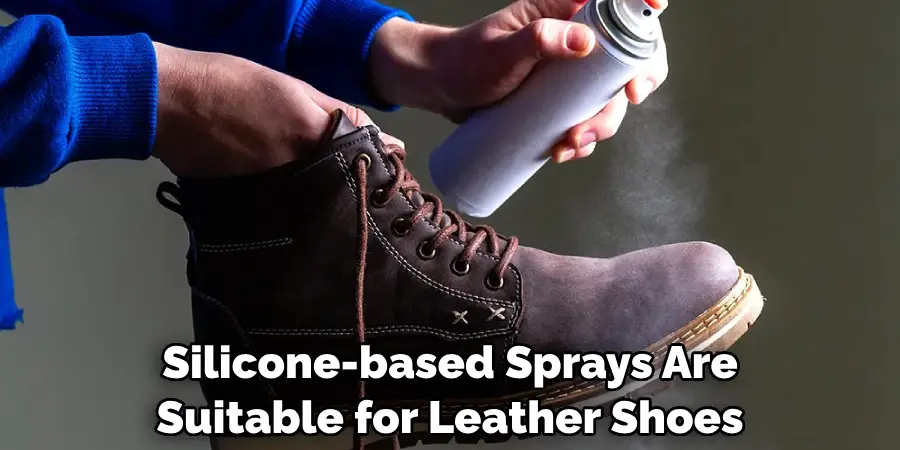
2. Clean the Shoes:
Before applying any impregnation product, it’s crucial to clean your shoes thoroughly. Use a soft brush or damp cloth to remove any dirt, dust, and debris from the surface of the shoes. Pay special attention to seams, creases, and other areas where dirt may accumulate. Allow the shoes to dry completely before proceeding with the impregnation process.
3. Test in a Small Area:
Before treating the entire shoe, it’s advisable to test the impregnation product on a small, inconspicuous area. This allows you to ensure compatibility with the shoe material and check for any adverse reactions such as discoloration or damage. Apply a small amount of the product to the test area and observe the results before proceeding with the full application.
4. Apply Evenly:
When applying the impregnation product, it’s essential to ensure even coverage across the entire surface of the shoes. Use a clean cloth, sponge, or applicator brush to apply the product, working it into the material thoroughly. Pay close attention to seams, stitching, and other areas where water may penetrate. Avoid oversaturating the material, as this can affect the breathability of the shoes.
5. Allow Sufficient Drying Time:
After applying the impregnation product, allow the shoes to dry completely in a well-ventilated area. The drying time may vary depending on the product and environmental conditions, so be sure to follow the manufacturer’s instructions. Avoid wearing or storing the shoes until the product has fully dried to prevent any transfer or staining.
6. Repeat for Maximum Protection:
For optimal waterproofing and protection, consider applying multiple coats of the impregnation product. Allow each layer to dry thoroughly before applying the next coat. Multiple coats can help build up a more durable barrier against moisture and prolong the effectiveness of the treatment.
7. Heat Activation:
Some impregnation products may require heat activation to penetrate the shoe material effectively. After applying the product, use a hairdryer or heat gun on a low setting to gently warm the treated areas. This heat activation helps the product penetrate the material more deeply, enhancing its waterproofing properties.

8. Specialized Treatments:
Certain shoe materials, such as suede and nubuck, may benefit from specialized waterproofing treatments designed specifically for these materials. Look for products formulated to maintain the texture and appearance of suede and nubuck while providing effective waterproofing. These specialized treatments help protect delicate materials without compromising their natural characteristics.
9. Maintenance and Reapplication:
Regular maintenance and reapplication of the impregnation product are essential for preserving the waterproofing properties of your shoes. Inspect your shoes regularly for signs of wear and reapply the product as needed, especially after exposure to moisture or heavy use. Proper maintenance and reapplication will help prolong the effectiveness of the waterproofing treatment and extend the life of your shoes.
10. Storage and Care:
Proper storage and care are key to maintaining the waterproofing of your shoes over time. Store your impregnated shoes in a cool, dry place away from direct sunlight and heat sources.
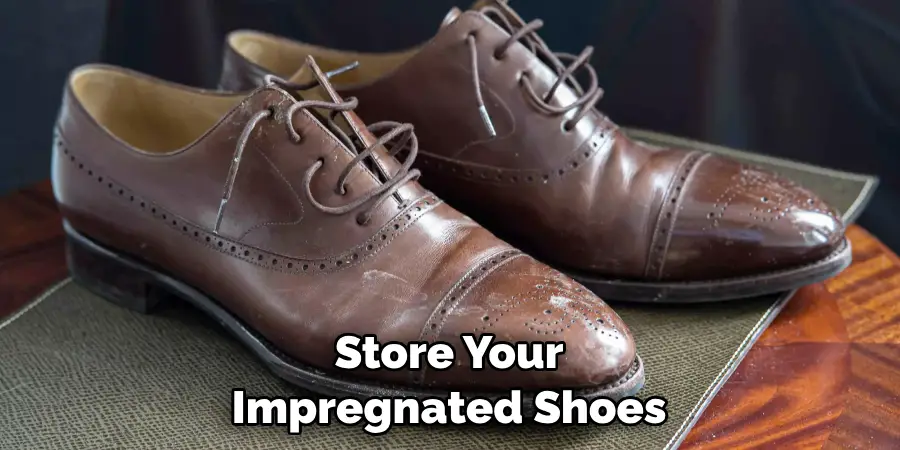
Avoid storing them in airtight containers or plastic bags, as this can trap moisture and compromise the waterproofing treatment. Regularly clean and condition your shoes to remove dirt and debris and maintain their appearance and integrity.
Conclusion
Recycling shoes is a sustainable practice that not only diverts waste from landfills but also reduces the environmental impact of shoe production. With millions of shoes discarded each year, finding ways to recycle them responsibly is essential for minimizing their carbon footprint. From sneakers to heels, virtually all types of shoes can be recycled, offering an opportunity to repurpose materials and conserve resources.
However, recycling shoes requires proper preparation and knowledge of the recycling process. In this article, we’ll explore various methods and resources for recycling shoes, from donation programs and shoe recycling centers to DIY upcycling projects. By learning how to recycle shoes effectively, individuals can contribute to a greener and more sustainable future while extending the life cycle of their footwear.

